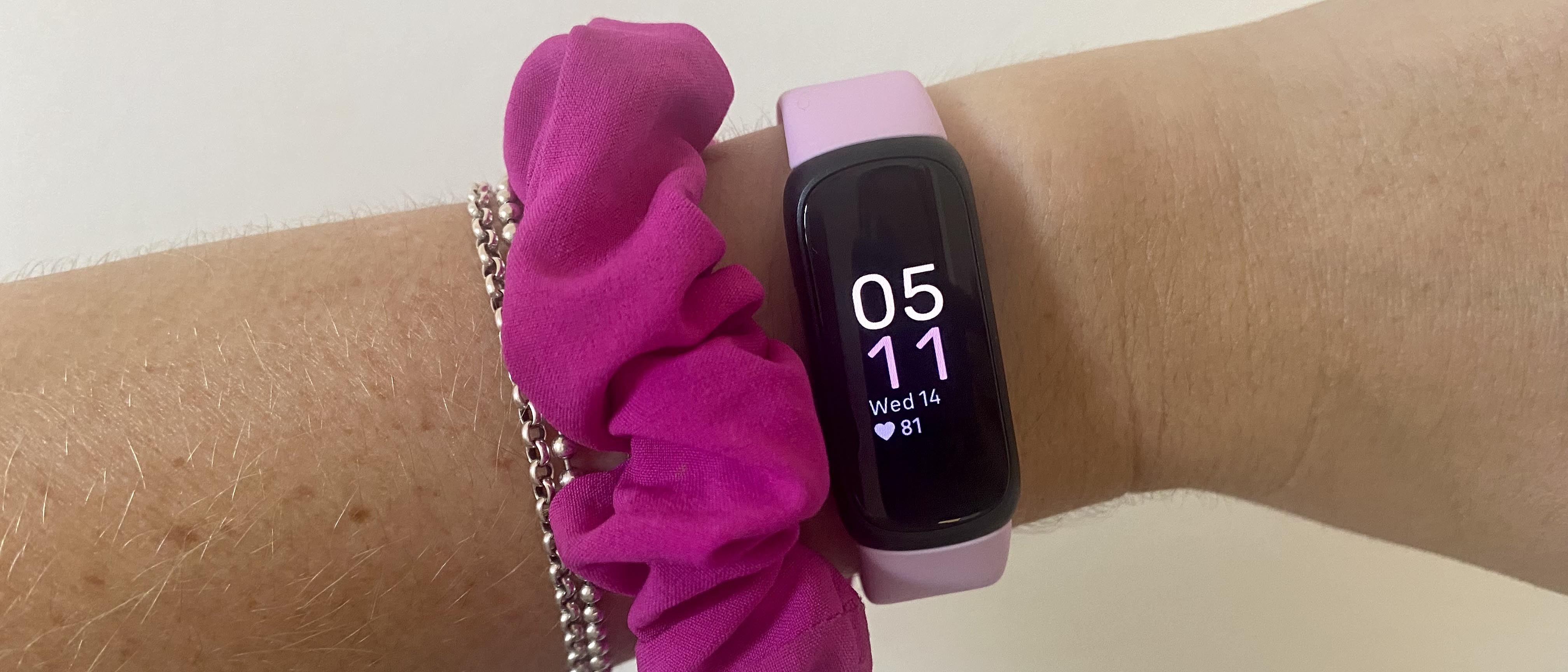
Price: $99.95
Size: 39.4 x 18.5 x 11.7mm
Display: 0.5-inch AMOLED
Weight: 0.62 oz
Water resistance: Up to 50m
Battery life: 10 days
GPS: No
There’s a saying that good things come in small packages, and this rings true with the Fitbit Inspire 3 — an affordable fitness tracker with a color AMOLED screen, and a fantastic battery life.
In a world of huge smartwatch screens and increased cost of living, this affordable little tracker is perfect for those looking to take their first steps into fitness, without a huge flashy gadget on their wrist, or a huge dent in their pocket.
Whether it's one of the best Fitbits for you depends on what you need out of a wrist-worn tracker. The Inspire 3 does all the essentials well, despite its tiny package, and lasts over a week between charges.
It's not as feature-packed as some of the best fitness trackers, but if you want to record your sleep, get some insights on your sleep, and track your workouts, then the Inspire 3 could be the ideal choice, wrapped in a budget-friendly package.
Fitbit Inspire 3 review: price and availability
The Fitbit Inspire 3 launched in September 2022 and cost $99.95. Many Fitbit devices got a price drop in late 2023, but the Inspire 3 currently retails at the launch price, although you can often find it on sale for around $75 at various retailers.
The tracker itself only comes in black, although you can customize the style with one of the interchangeable bands; black, lilac, and morning glow. You also get a choice of Small or Large wristband when you buy the Inspire 3.
Helpfully, there's also an exercise clip for when you want to attach it to your clothes or sports bra. Feature-wise, it has all the Fitbit essentials, like step counting, sleep tracking, and workout recording alongside a heart rate monitor.
It's the most stripped-back tracker in the range, offering similar features to the fashion-focused Fitbit Luxe, but if you can forgo the health monitoring sensors found on the Charge 6, then it's an affordable option.
Fitbit Inspire 3 review: design
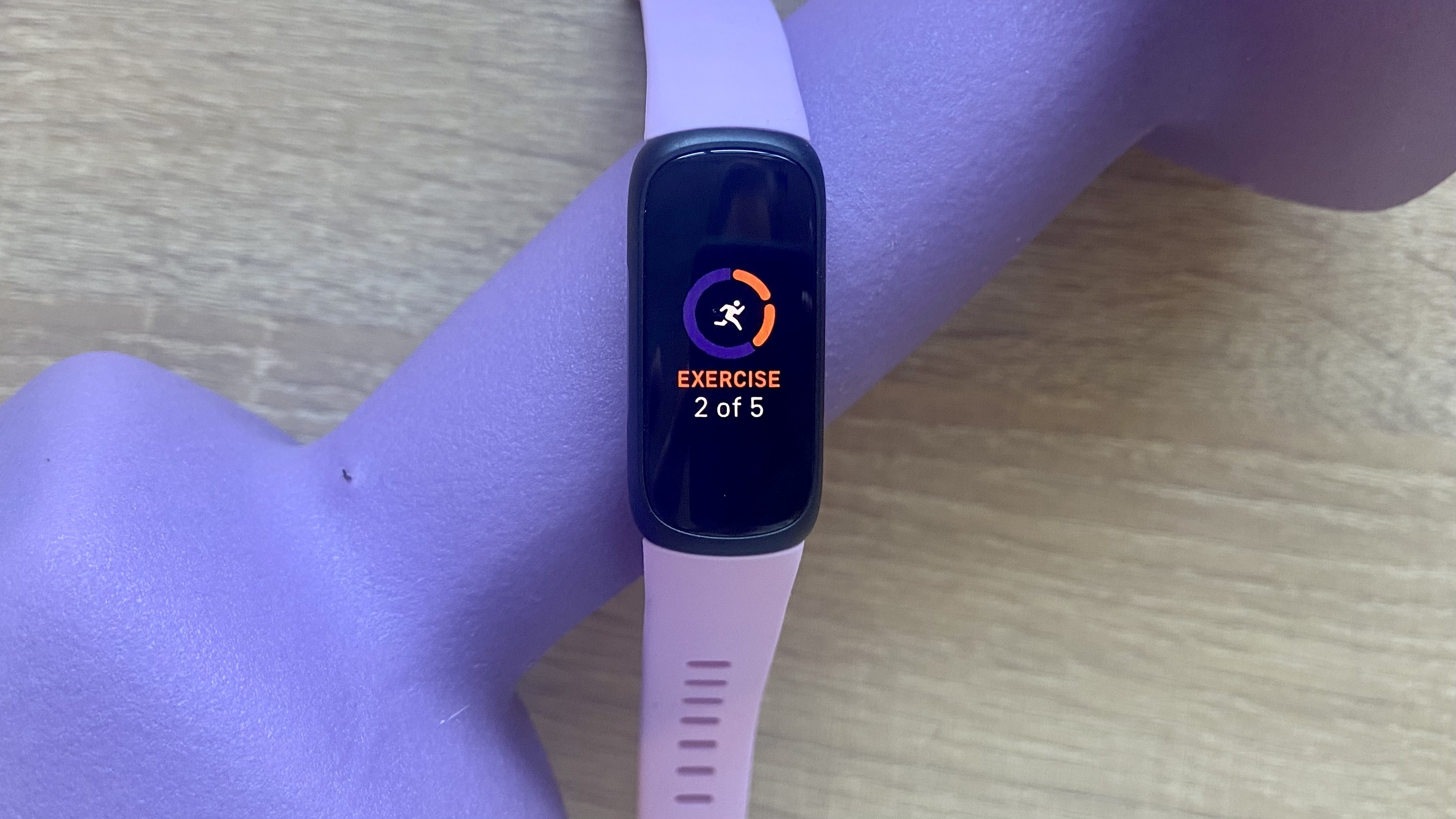
The Fitbit Inspire 3 looks very similar to the Inspire 2 — the tracker is pretty much the same size, with the same rounded edges. It's small and neat on the wrist, especially compared to larger devices like the Apple Watch Series 9.
It's light enough that you can wear it for hours without really noticing, which is handy since it has a 10-day battery life. However, the main difference between the Inspire 3 and its predecessor is the bright, clear, color AMOLED display.
I really liked how the screen’s colorway matched the lilac of the wristband, and found it bright and easy to read, even in direct sunlight. As with the Charge 6, the brighter screen instantly gives the tracker a more premium feel, even though the Inspire 3 is less than $100.
Like the Fitbit Inspire 2, there are two haptic buttons on the side of the tracker, which keeps the weight of the tracker down and makes it easier to navigate. Of course, the screen itself is pretty small, especially compared to the likes of the new Apple Watch Ultra and the Galaxy Watch 5.
However. I’d argue that this little tracker isn’t designed for checking your messages — I found that text would endlessly scroll on the small screen, so I soon turned smart notifications off.
Fitbit Inspire 3 review: fitness tracking

The Fitbit Inspire 3 will track your heart rate, steps, calories, Active Zone Minutes, stress, SpO2, and sleep, all for under $100. You can set six workout shortcuts on the device from a selection of 41+ different exercises, like running, walking, kickboxing, Pilates, tennis and golf.
While exercising, you can scroll data on the display to get live feedback, but it's a fiddly task on a screen so small. I preferred to start the activity, then clip the tracker to my sports bra and look at the data later on in the app.
You probably wouldn't want to train for a marathon with the Inspire 3 — I found the touchscreen wasn't very responsive with sweaty hands — but since it doesn't have GPS built-in, it's not really designed for intense training like that.

I used the Inspire 3 for a 30-minute Peloton ride alongside my Apple Watch 7, and found that the heart rate data was consistent between the two. Both recorded an average heart rate of 142 beats per minute, with the Apple Watch reading my max heart rate as 168, and my Fitbit reading it as 163.
I wish now I’d worn a chest strap as well, but the point is that the two readings are incredibly similar, and the Inspire 3 is a fraction of the price. You can also set move reminders to prevent you from spending too long sat down behind your desk.
Plus, Fitbit includes weekly exercise goals to encourage you to exercise for five days of the week, and the Inspire 3 automatically recognizes common exercises like walking, running, cycling, spinning, elliptical and rowing, which all count towards your goal.
Fitbit Inspire 3 review: features
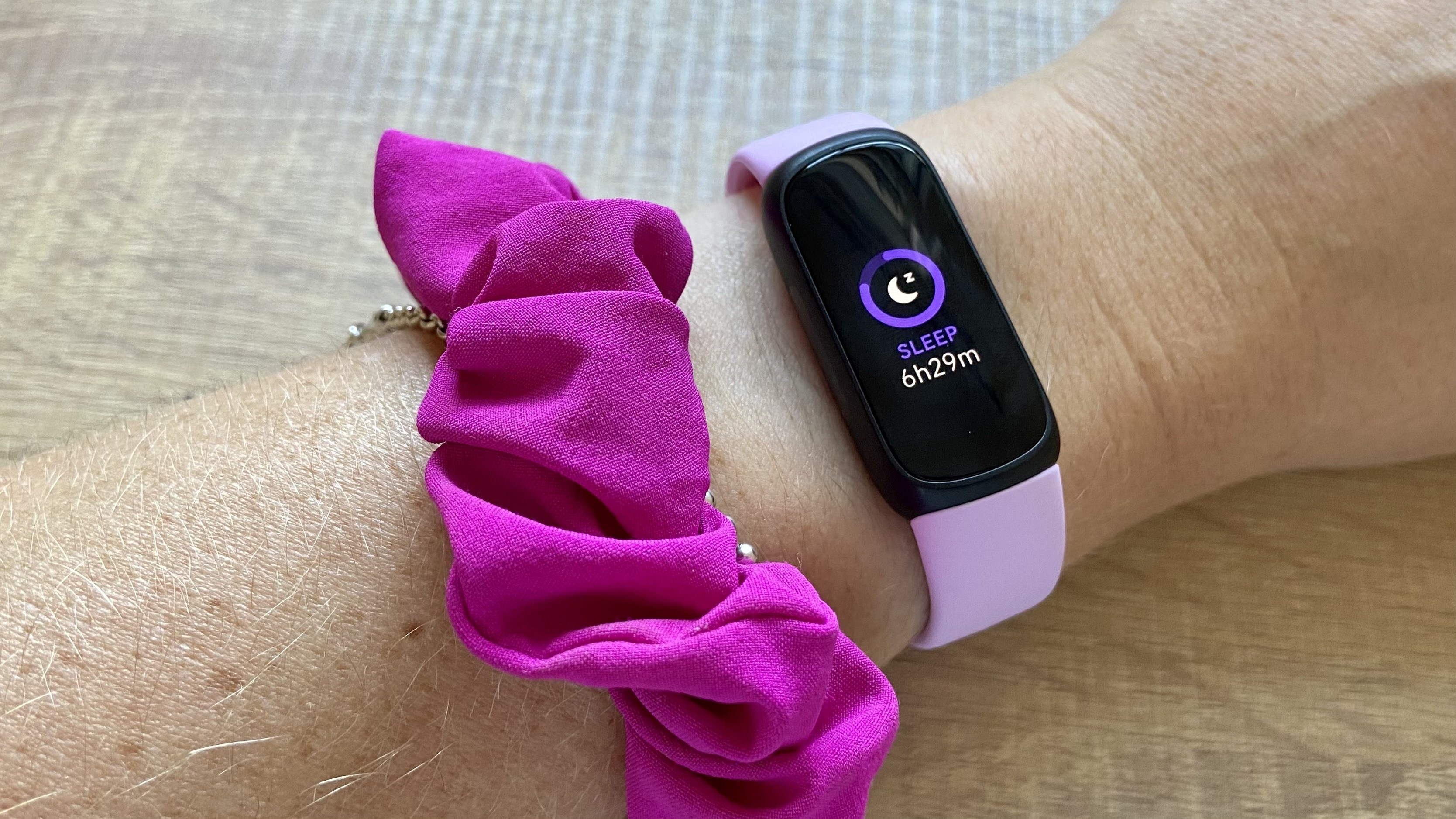
Although they're called fitness trackers, Fitbit's devices also include sleep tracking. I wore it to track my sleep for a week, and found it accurately worked out the time I fell asleep (rather than that 30 minutes I spent lying in bed scrolling through Instagram), and when I woke up in the night.
The only thing that bugs me about Fitbit’s sleep tracking is that they put some of the most in-depth information behind a paywall. While free Fitbit members can track their time spent asleep, Fitbit Premium offers subscribers further insight into their sleep, as well as giving a sleep score, but it'll set you back $9.99/month.
The overall nightly sleep score is based on your heart rate, the time you spend awake or restless, and your sleep stages during the night. There are also guided programs to help you improve your sleep, and get into a better bedtime routine.
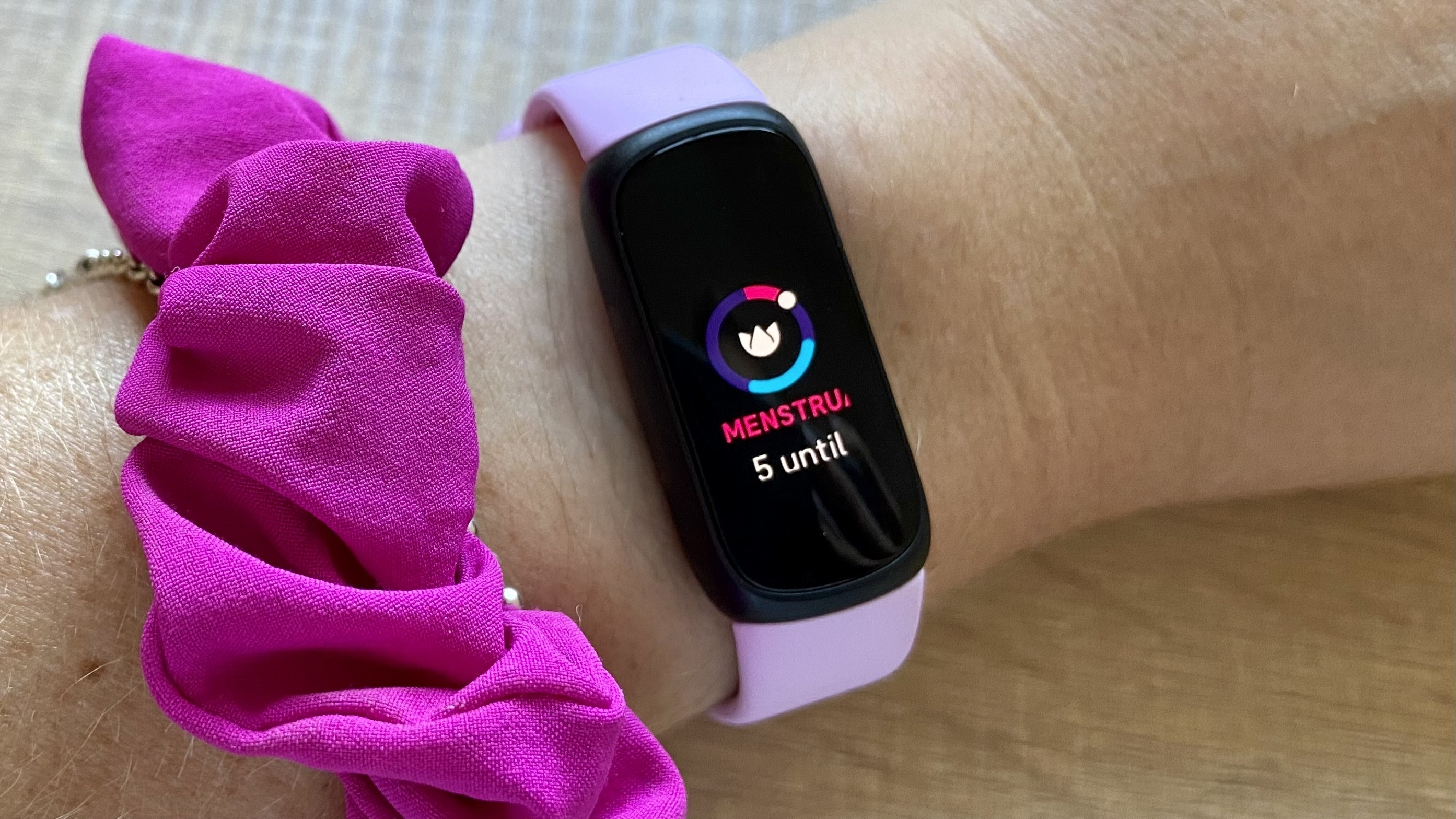
However, if you're after an affordable tracker, you might not want to spend an extra $10 each month to view your data. I feel that once you buy a device, you should be able to view all the stats, like you can with the best Garmin watches and the best Apple Watches.
Like several of Fitbit's latest devices, the Inspire 3 can also help track your menstrual cycle. I find it useful to see at a glance while exercising, as there will be certain times when my running performance will change. I found it worked well, and I appreciated the clear reminders on the tracker's display.
Fitbit Inspire 3 review: battery life
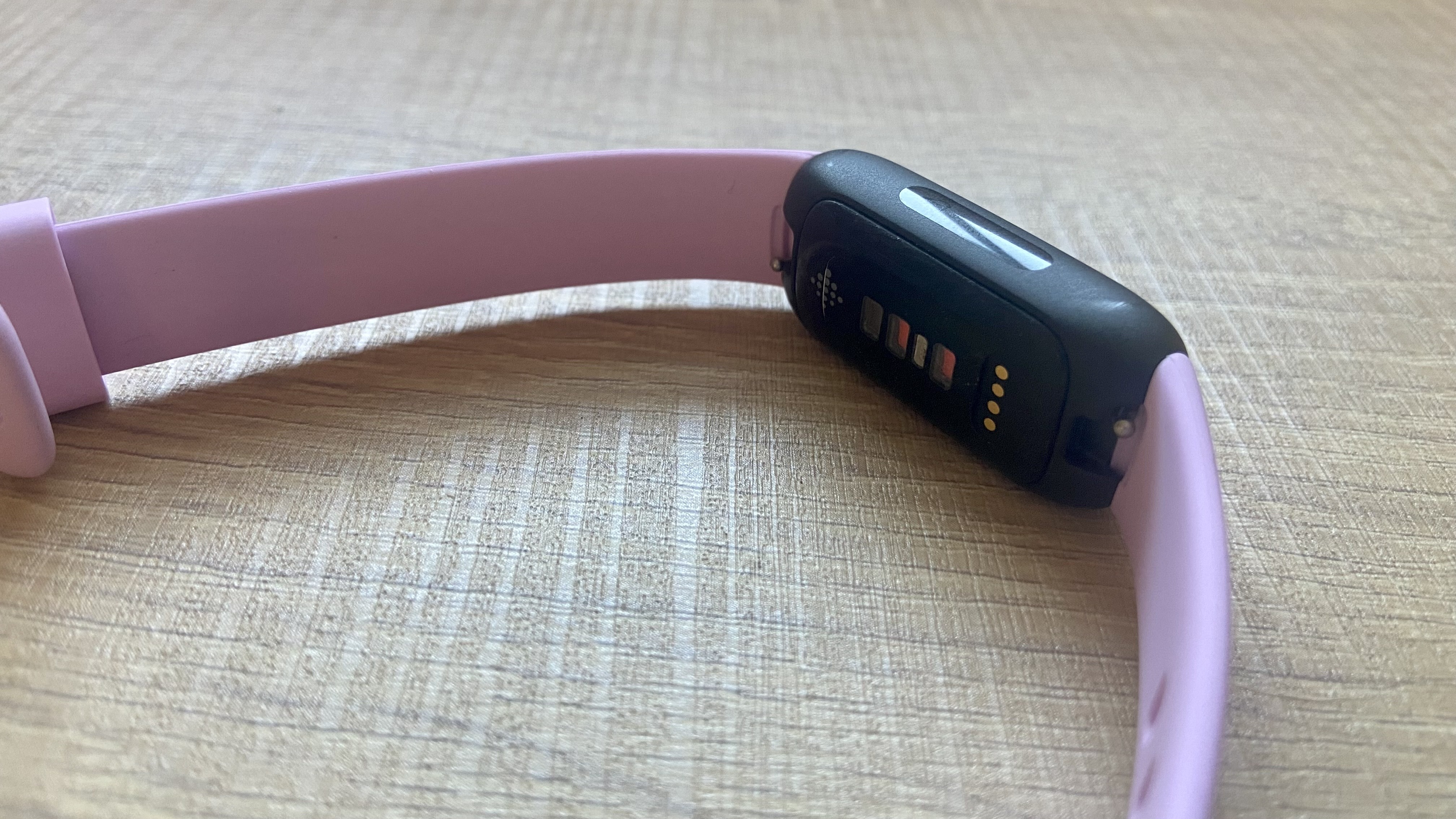
Fitbit says you should get 10 days out of the Inspire 3 between charges. I was curious if this would hold up with the color display, and it did pretty well. With the always-on setting enabled, doing at least one workout a day, for a week, and finished with the tracker on 10%.
Pretty good going, especially considering I’d charged my Apple Watch 7 every night in that time (perhaps this is an unfair comparison — the Inspire 3 doesn’t have built-in GPS, so tracking activities don’t act as too much of a drain on the battery life, whereas the Apple Watch 7 does).
Obviously turning the always-on display off might have extended the battery life of the tracker, but it’s still impressive. It also charged back up from 10% to fully charged in just under two hours.
Should you buy the Fitbit Inspire 3?
The Fitbit Inspire 3 is an excellent, affordable fitness tracker for anyone looking to take their first steps into fitness, or just gain a better understanding of their overall health using the sleep and heart rate monitoring features.
Compared to the Inspire 2, the new color display upgrades the Inspire 3 from a good tracker to a great one, especially for the price — you're unlikely to find a more comprehensive and accessible tracker for less than $100.
If you're looking for a tracker with a greater array of sensors, the Fitbit Charge 6 is a great alternative. It's more expensive, but it has GPS, an ECG monitor, and more advanced stress-tracking tools. But if you're happy with the essentials, the Inspire 3 is an excellent choice.







